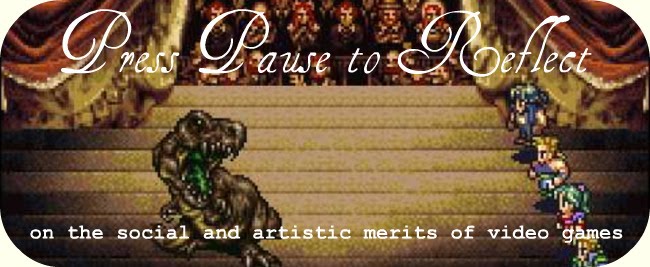 by Daniel Bullard-Bates
by Daniel Bullard-Bates
Many game designers seek ways of either extending a video game’s play time or encouraging multiple playthroughs of a game. If done well, these strategies can add considerable value to a game. Here are some of the most common ways this is done, and a few pointers on how to make sure it doesn’t damage the game experience:
1. Add collectible items.
How to do it right: All the collectible items should serve some in-game purpose, either helping the player in some substantive way (Heart pieces in most Zelda games) or providing some narrative role (audio diaries in BioShock).2. Add optional sidequests/alternate goals.
How to mess it up: Make the collectible items almost entirely irrelevant, apart from achievements and self-satisfaction (flags in Assassin’s Creed).
How to do it right: Make the alternate goals and sidequests either challenging (comets in Super Mario Galaxy) or interesting, unique experiences (vaults, areas and sidequests in Fallout 3).3. Allow New Game + (starting the game over with all characters at the same level and/or with the same equipment and powers as they were after beating the game).
How to mess it up: Make the alternate goals/sidequests dull, simple and repetitive (most of the uncharted worlds in Mass Effect, most of the quests given by random NPCs in The Elder Scrolls IV: Oblivion).
How to do it right: Allow for new possibilities and outcomes with each additional playthrough in the form of secret areas to be accessed, alternate outcomes to encounters, and alternate endings (Chrono Trigger).4. Allow new playthroughs with new characters.
How to mess it up: Make it entirely irrelevant, keeping the game entirely the same, only easier as a result of the added levels/equipment/powers (Mass Effect, though playing at a higher difficulty adds some value).
How to do it right: Make sure that a playthrough with a new character provides a new experience, either through alternate skills and focuses (Mass Effect, Fallout 3) or different control schemes and gameplay types (playing as Richter Belmont in Castlevania: Symphony of the Night).5. Create complicated skill/power/upgrade trees.
How to mess it up: Make the new characters exactly the same as the old ones, just with a different skin or costume (Star Wars: The Force Unleashed).
How to do it right: If there are enough different powers to acquire, combos to learn, skills to upgrade and so forth, this can be a compelling reason to play a game again to learn and try them all (Ninja Gaiden, God of War).6. Provide alternate story/moral paths.
How to mess it up: Make some powers clearly superior and others useless past certain points in a game, so that there’s really no need or impetus to upgrade them all (Star Wars: The Force Unleashed).
How to do it right: Add a major choice that can change the plot of the game or a morality system that can be played two or more ways with different results (Star Wars: Knights of the Old Republic) so that players will want to play again to see the alternative options.7. Add secret areas/levels.
How to mess it up: Have few/no consequences to the choices made and/or make them too black and white (BioShock).
How to do it right: Make the secret areas/levels interesting, fun, and non-essential (Super Mario World).8. Add greater challenges and difficulty ratings.
How to mess it up: Make a secret level/area required to finish the game (Castlevania: Order of Ecclesia).
How to do it right: Make each difficulty ramp up naturally from the previous ones, providing a challenging experience (Gears of War).9. Make an incredible game.
How to mess it up: Make the normal difficulty setting way too hard for most players, discouraging them from learning the game’s systems (Ninja Gaiden).
How to do it right: If you’ve got this one figured out, no tricks or additions will be required. People will be playing your game over and over again for years to come.

Some of them seem to overlap a bit, or to be too similar to one another. Like 3, 4 and 5; 7, 2 and 1.
ReplyDeleteThe 9 is funny though, and makes up for it.
I definitely agree that some of these overlap, and that was intentional. I made sure to divide them up the way games do, however: New Game + most often appears in Japanese RPGs, for example, though those games usually don't let you play as different characters, setting your cast in stone. Playing as a newly created character is more often an option present in Western RPGs. Different skill/power trees show up in action games like God of War a lot, but these games are also less likely to allow replaying as a new character. All of these options are different ways of allowing a new experience with a character or characters that play differently, but they are different approaches to accomplishing that.
ReplyDeleteAll that being said, though, I agree that a lot of genres borrow from one another, and the result can be good or bad: cross-pollination results in great combinations like the addition of levelling up in Castlevania: Symphony of the Night, but it can also make games seem downright derivative.